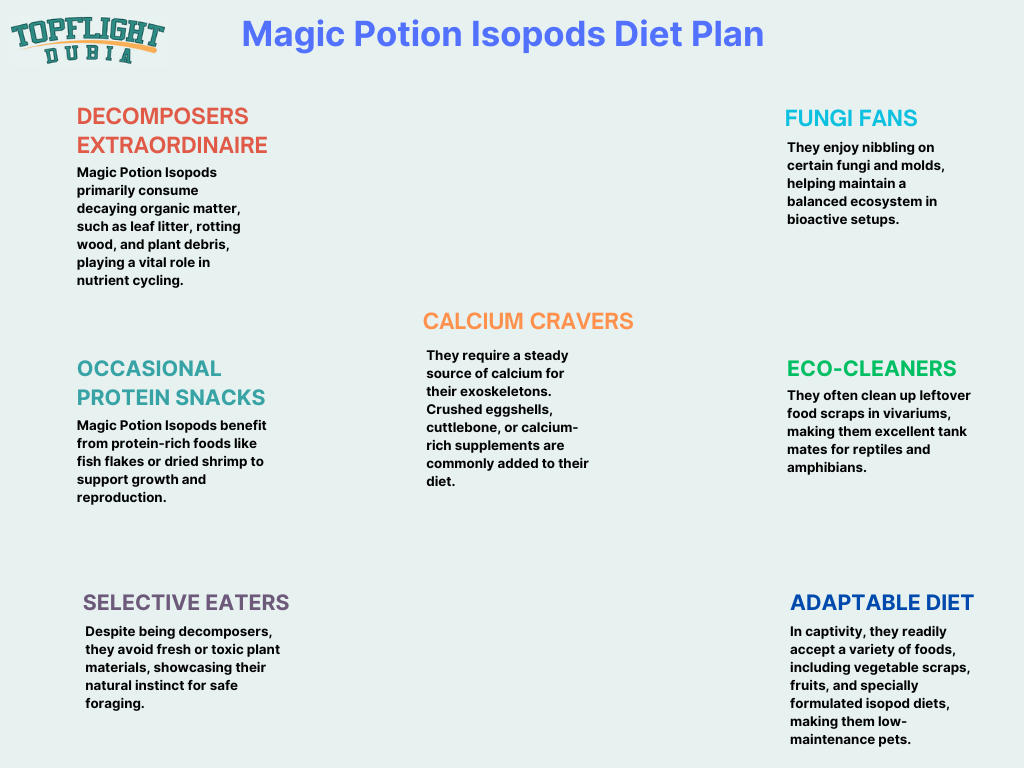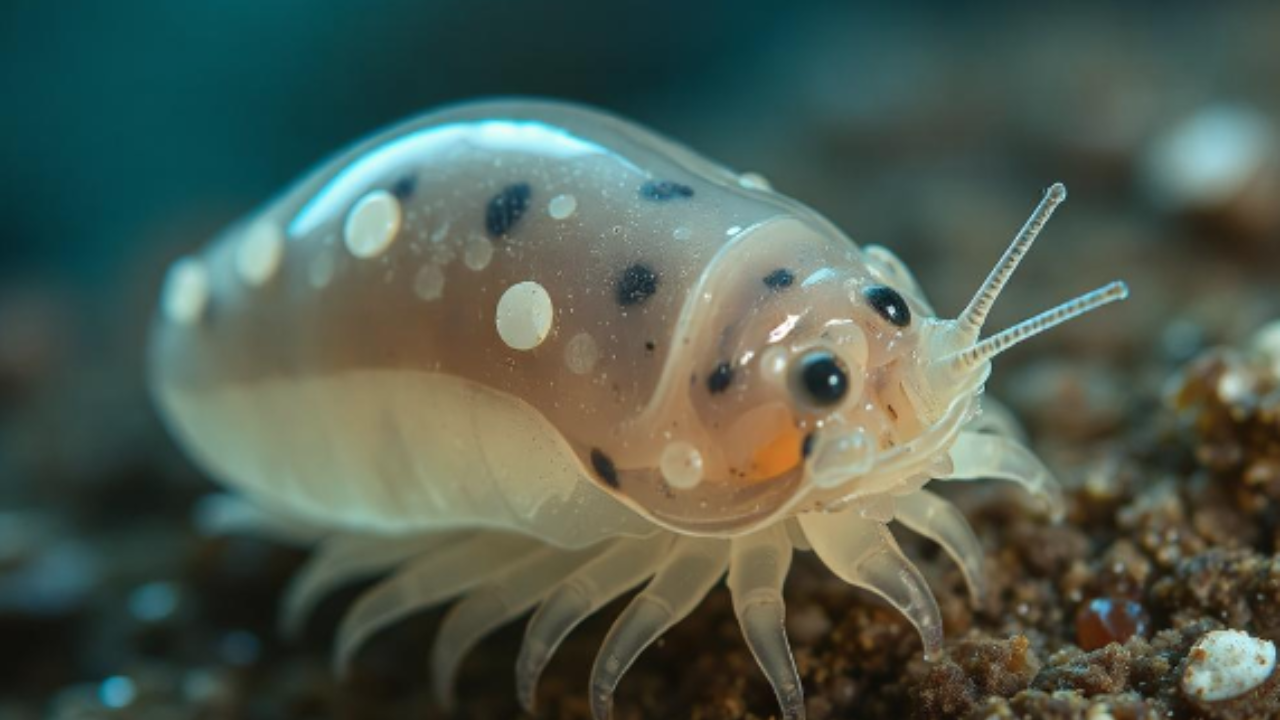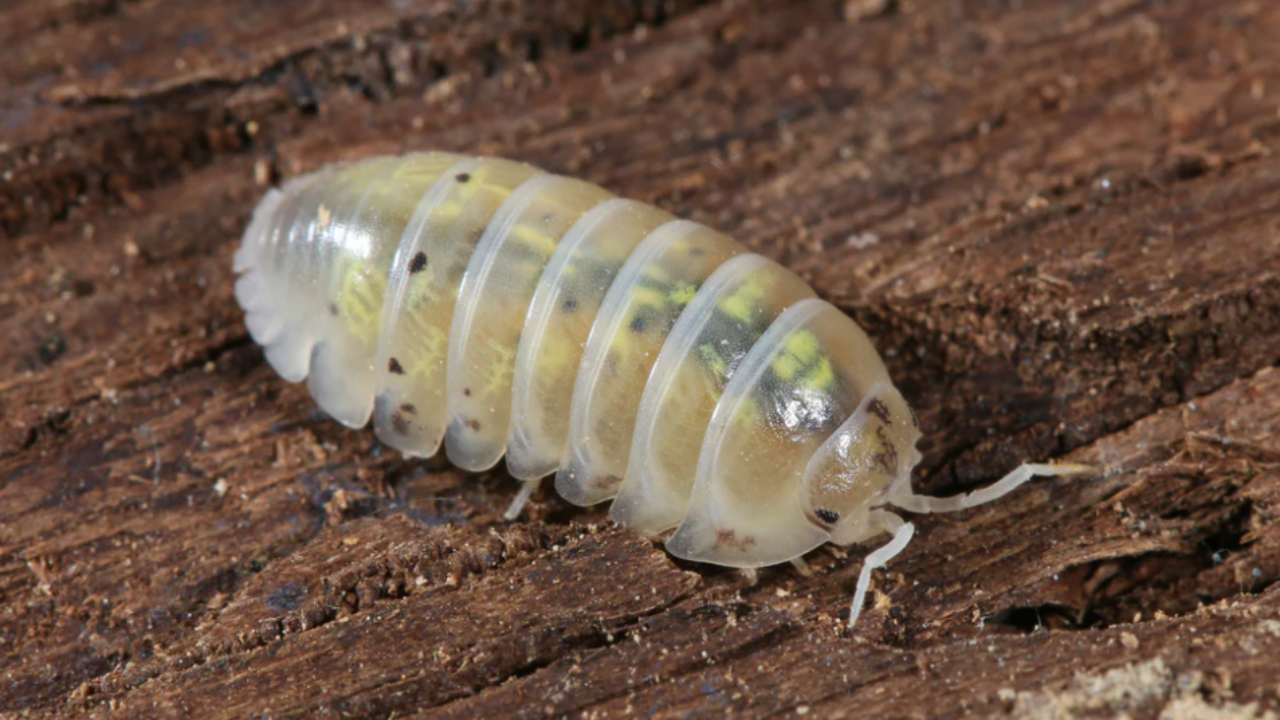Care Guide: Magic Potion Isopods
Posted by Grace Walker on Apr 5th 2024
The wonders of magic potion isopods are mystical in nature. Scientifically called “Armadillidium vulgare,” they are renowned in the world of terrestrial isopods for their striking appearance.
The name of this delicate creature comes from the outer look of the body, which features a unique mix of yellow and white patterns that resemble a bubbling potion.
Many pet owners like to keep these isopods in their houses and even breed them.
TopFlight Dubia is introducing this detailed guide to a caring pet lover like yourself to know everything about witches potion isopods, from knowing how to care for isopods to the entire breeding process.
Go through this entire guide and let your exotic adventure begin.
The Habitat Of Magic Isopods
Armadillidium vulgare magic potion isopods are native to Europe and are preferred for their engaging behavior, ease of care, and vibrant coloration of the body. They play a crucial role as bioactive cleansers.
They feed primarily on dead and decaying organic matter and are known to thrive in humid conditions.
this makes these magical creatures ideal for bioactive vivariums and gives a dense perspective on the microcosmic world of nature's recyclers.
What Do Magic Potion Isopods Eat?
Their eating habits are consistent. They mostly prefer to feed on decaying organic matter, such as leaf litter, but they are also adaptable to other food sources. Here is what they primarily feed at:

The Fine Details Of Isopod Appearance

Here are the intricacies of Isopod's look:
01. Eye Popping Coloration
Magic Potion Isopods have a visually striking appearance, a perfect black and vibrant white blend. This feature is ever present in these isopods but can vary in intensity and shape.
02. Body Shape
Shape: Pill bug shape
Skeleton Type: Segmented body & curved exoskeleton
03. Body Size
Length: 1-2 cm
Purpose: This size is ideal for easy viewing, especially in enclosures like terrariums.
04. Unique Markings
The magical look is marked by bright white patches that form irregular shapes across their dark bodies.
05. Texture Of Exoskeleton
The outer body is smooth and shiny, which results in a glossy look. The outer shell is made of chitin, appealingly reflecting light.
06. Antennas and Legs
Antennae: Long & Slender
|
The antennae act as an essential sensory tool. |
Legs: Extend from the side of the body and are segmented in nature.
07. Eye Color
The color is generally black or dark brown, which strongly contrasts with the lighter body coloration.
08. Dorsal View
The top-down view most noticeably contrasts the dark, almost black tones with the white/cream-colored markings.
Reproduction Of Magic Potion Isopod
Sexually speaking, these exotic creatures are “hermaphrodites” in nature. Both male and female body organs in a single body enable them to reproduce independently without any mate.
They take approximately 3 to 4 months to grow and then mature enough to reproduce. The amount of daylight plays a significant role in this process, and the presence of long daylight stimulates it.
The Breeding Process
If you, as a pet lover, are deciding on whether to keep these exotic creatures and breed them, then TopFlight Dubia ensures that this is a simple process.
There are majorly two lines of breed:
- Japanese magic potion isopod
- American magic potion isopod
The Japanese line breeds pretty well, and the American line struggles to create a healthy line. Knowing how to care for isopods will keep them intact to create a lineage.

The Final Word
The world of magic potion isopod is mysterious and magical. Having these creatures in your house will be a wonderful experience for a pet lover like yourself.
Bring these creatures into your home and ensure a lifelong friend.

